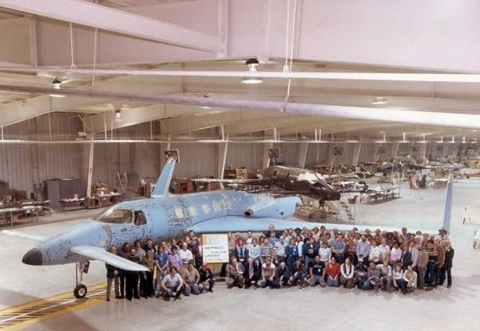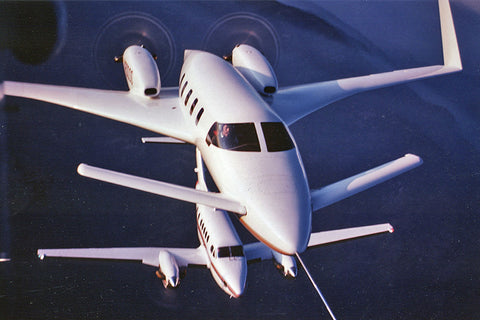Why the Beechcraft Starship Failed
In the late 1980s, the aerospace industry witnessed the birth of a revolutionary aircraft – the Beechcraft Starship. Boasting futuristic design elements and cutting-edge technology, the Starship was intended to redefine the standards of business aviation. However, despite its ambitious goals and initial excitement, the Beechcraft Starship ultimately failed to gain traction in the market. This article delves into the factors that contributed to the demise of this innovative aircraft.
Ambitious Design:

One of the key reasons behind the Beechcraft Starship's struggle was its unconventional design. The aircraft featured a canard configuration, with a forward wing, and pusher propellers mounted at the back. While this design promised enhanced fuel efficiency and speed, it was a departure from traditional aircraft layouts. Potential buyers were skeptical about the aircraft's performance and maintenance costs, as well as the need for specialized training for pilots.
High Development Costs:

The original prototype was built by Burt Rutan. His proof of concept aircraft appeared promising but Rutan had no experience in designing and manufacturing FAA certifiable transport aircraft. Subsequently, the development of the Beechcraft Starship proved to be an extremely costly endeavor. Beechcraft, later acquired by Raytheon Aircraft Company, invested heavily in research and development, leading to significant financial strain. The ambitious design, coupled with the utilization of advanced composite materials and manufacturing processes, contributed to escalating costs. As a result, the company faced challenges in pricing the aircraft competitively, deterring potential customers who sought more cost-effective alternatives.
Market Challenges:

Entering the market with a groundbreaking design meant that the Beechcraft Starship faced stiff competition from established players in the business aviation sector. Traditional business jets offered proven reliability, established pilot training programs, and a sense of familiarity that the Starship struggled to match. Prospective buyers, especially in the corporate and private sectors, were hesitant to adopt a novel aircraft with an uncertain future.
Performance Limitations:

Despite its futuristic design, the Beechcraft Starship encountered performance limitations that hindered its market appeal. The pusher propellers, while efficient in theory, faced challenges related to noise and vibration. Additionally, the aircraft's speed fell short of expectations, and its range was limited compared to competing models. These performance shortcomings further eroded the Starship's attractiveness in the eyes of potential buyers.
Regulatory Hurdles:

The aviation industry is highly regulated, and the Beechcraft Starship faced its share of challenges in obtaining necessary certifications. Primarily due to the FAA's unfamiliarity with certifying carbon fiber aircraft, FAA demand induced delays prolonged the time it took for the aircraft to enter service. This, combined with the aforementioned issues, led to a loss of momentum and market interest.

The Beechcraft Starship serves as a cautionary tale in the aerospace industry, highlighting the complexities and challenges associated with introducing revolutionary designs. While the Starship showcased innovation and a bold vision, it struggled to overcome the practical hurdles of cost, market competition, and performance expectations. Ultimately, the failure of the Beechcraft Starship underscores the delicate balance between innovation and the realities of a competitive industry.

